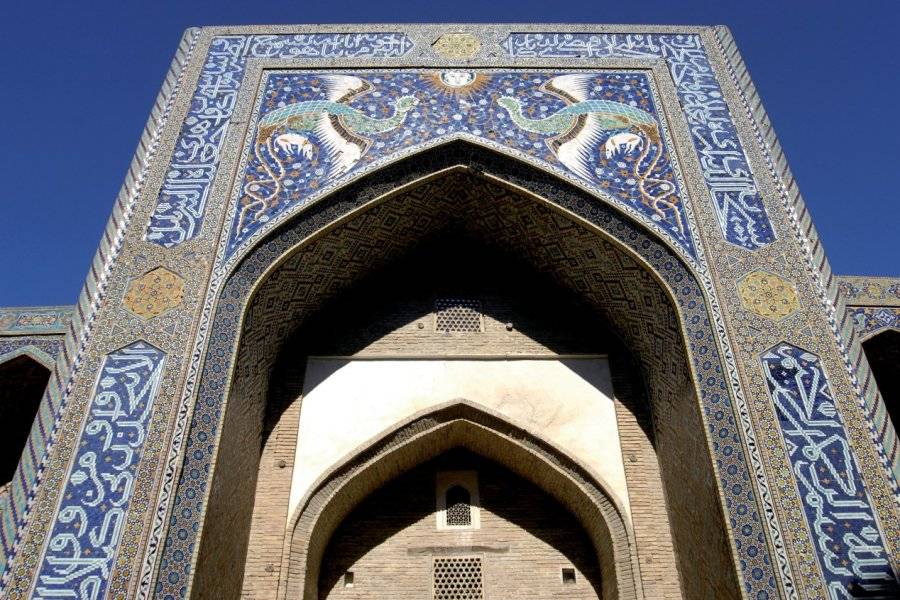LIAB-I-KHAOUZ ENSEMBLE
Lined with chaikhanas and centuries-old mulberry trees, the Liab-i-Khaouz is a lively, friendly place in the heart of the old town, and the ideal starting point for strolls around Bukhara.
The pool keeps you cool even in the hottest hours of summer. In its heyday, the city boasted a hundred such ponds. It is now flanked by restaurants on three sides, where the traditional takhtans have, for the most part, been replaced by Western-style tables and chairs. The aksakal, or elders, can be seen here, as usual, watching the tourists pass by and playing dominoes. Legend has it that a Jewish woman's house once stood on the site of the pool. When she refused to move and interfered with the vizier's plans, he decided to dig a canal beneath her house. The damp house eventually collapsed. This banal story of eviction had such an impact on the town's inhabitants that they named the basin Khaouz Bazur, the basin of constraint. As well as being one of the few existing basins, it's also one of the city's largest: 45 m long and 36 m wide.
To the north, a little further back, the Koukeldash madrasa, the largest and oldest, was built in 1568 by Kulbaba Koukeldash; it measures 80 m by 60 m and comprises 160 cells on two levels. The Nadir-Divanbeg madrasa and khanaka, facing each other respectively to the east and west of the basin, date from 1620, as does the water feature.
To the east of the basin, the Nadir-Divanbeg madrasa is distinguished by the two immense semurgs, or simorghs, that adorn its portal. These fantastic birds, with their blue and green plumage, hold a doe in their talons and seem to be flying towards a sun god. The high entrance porch is typical of caravanserais. But the story goes that the khan made a mistake at the inauguration and congratulated Nadir-Divan-Begi on his religious zeal in building such beautiful madrasas. It was unthinkable to contradict the khan! Although there were no study rooms or mosque, the caravanserai became a madrasa. In fact, this transformation was undoubtedly caused by the decline in commercial activity that affected Bukhara in the 17th century. Today, the cells house souvenir stores and craftsmen's workshops. Concerts in summer.
Finally, to the west, the Nadir-Divanbeg khanaka was home to pilgrim dervishes. They stayed in the cells surrounding the central mosque, now an art gallery and souvenir store.
Did you know? This review was written by our professional authors.
Members' reviews on LIAB-I-KHAOUZ ENSEMBLE
The ratings and reviews below reflect the subjective opinions of members and not the opinion of The Little Witty.







je l'aurais sans doute plus apprécié sur un période plus calme mais c'était tout de même très beau
De vrais artisans , marionettes, bois, miniatures, etc.. pas de l'import de chine ou d'Inde...